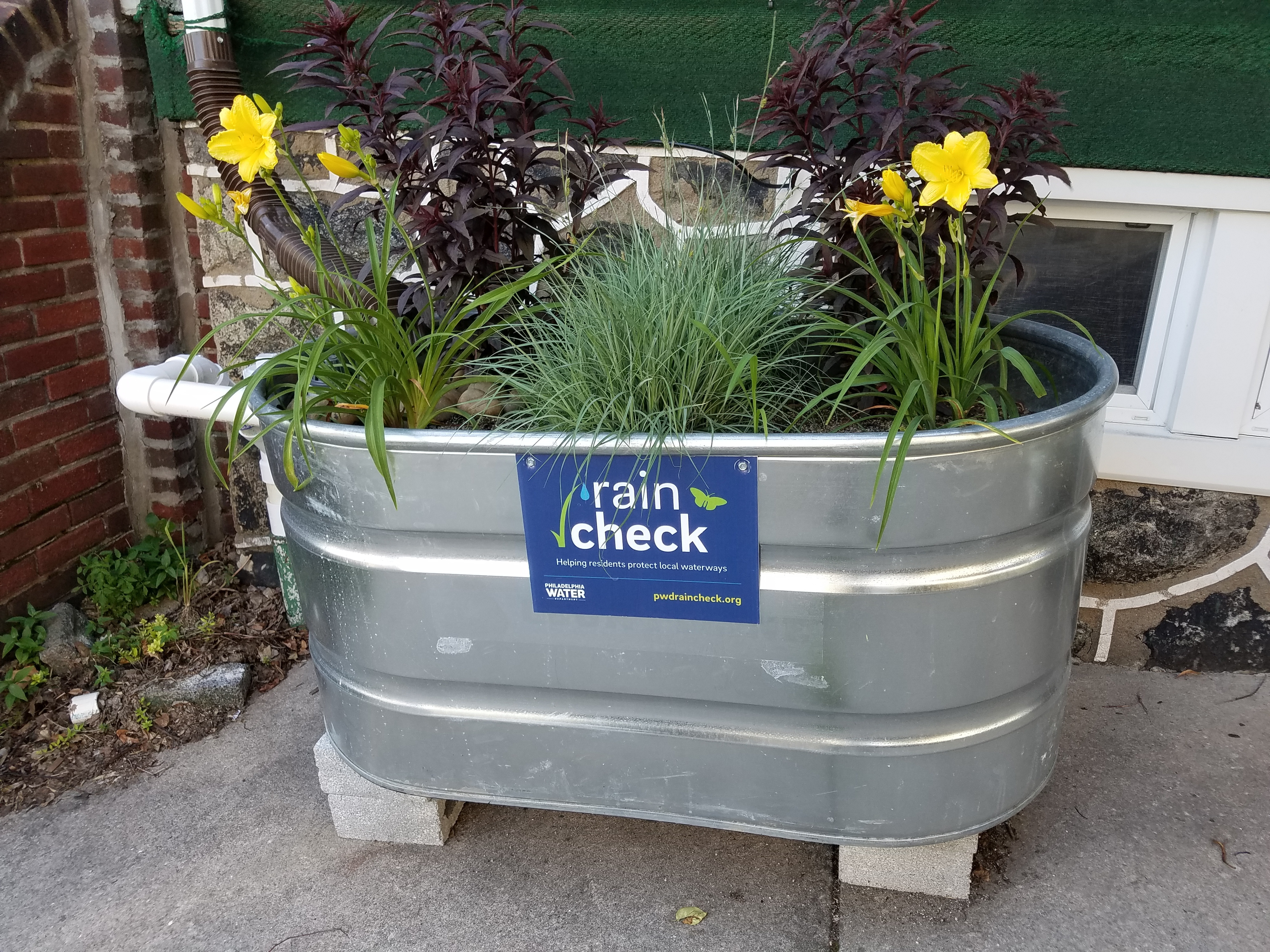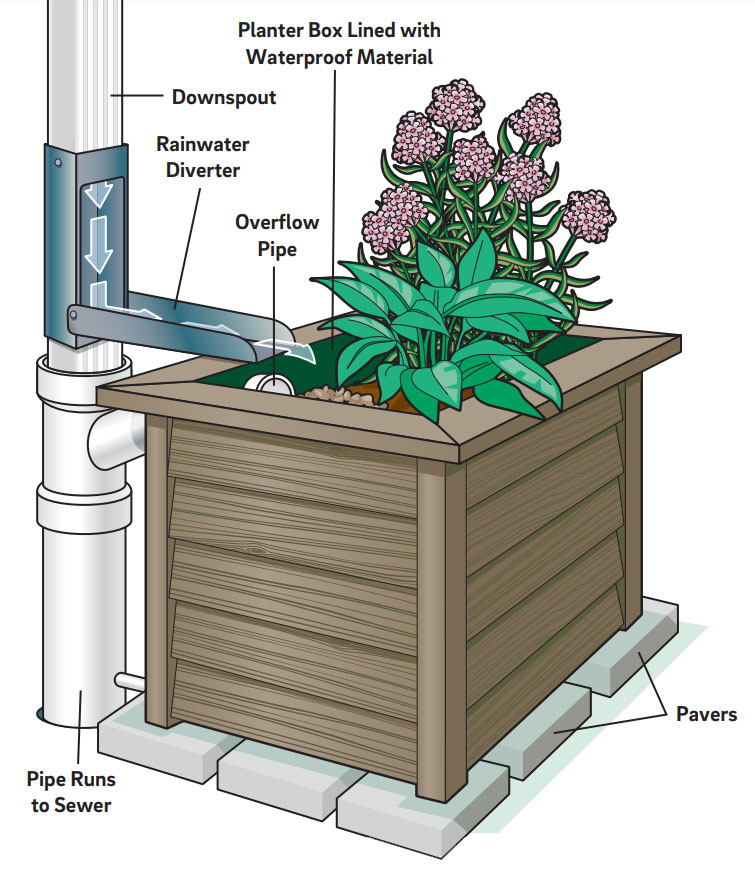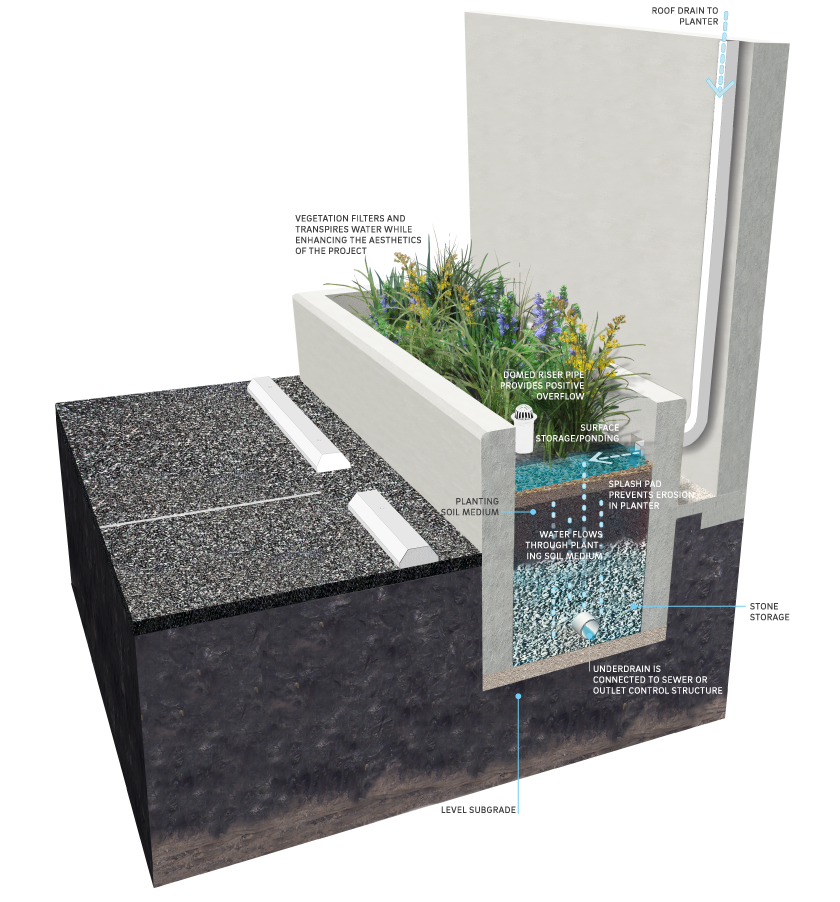Connected to the roof, downspout planters allow stormwater from gutters to flow through and be absorbed by vegetation. The systems temporarily store runoff and filter sediment and pollutants as water infiltrates through the planter.

A flow-through planter is a structure designed to allow stormwater from roof gutters to flow through and be used by vegetation. The systems consist of gravel, soil, plants, and a connection to the roof downspout. They temporarily store stormwater runoff on top of soil, filtering sediment and pollutants as water infiltrates through the planter. They are typically waterproofed, and the bottom of the planter is usually impervious. Therefore, planters do not infiltrate runoff into the ground. Rather, they rely on evapotranspiration and short-term storage to manage stormwater. Excess water can overflow into the existing downspout connection. Flow-through planters can be constructed in many sizes, shapes, and with various materials, including concrete, brick, plastic lumber or wood.

